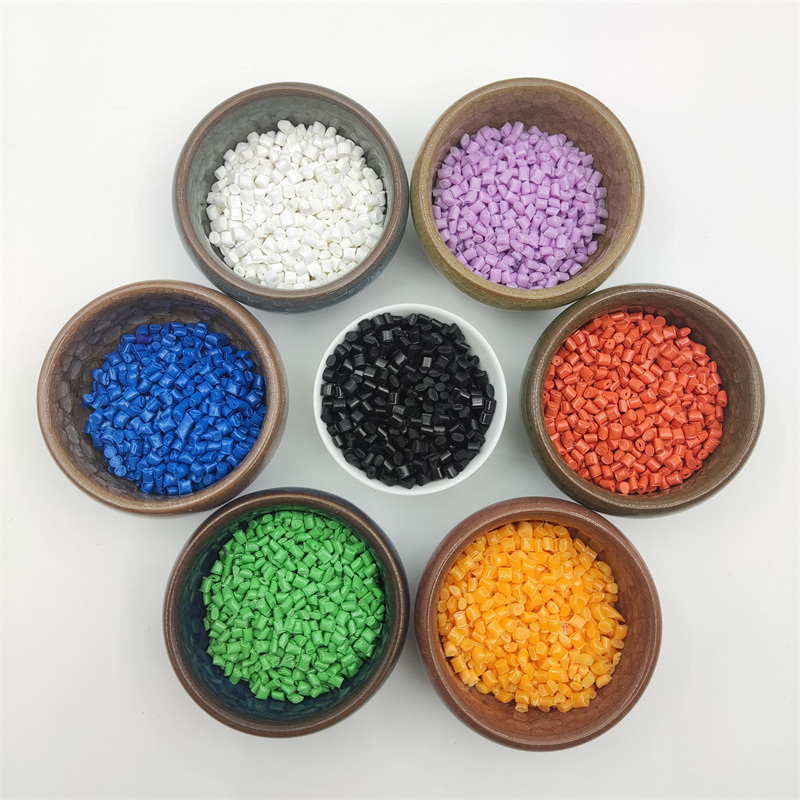News
Identification method of plastic particles such as PP|PC|ABS|PA|POM|PC/ABS (2/2)
In the last tweet, we talked about how to identify different types of resin particles based on their appearance. Today we will share the identification of various plastic densities and the identification of combustion flame and smoke conditions.
2: Use various types of plastic density identification
PP: Polypropylene is the lightest plastic compared to others, with a density of 0.89-1.91 grams per cubic centimeter and can float in water.
PE: Plastic is 0.91-0.95 grams per cubic centimeter and can float in water.
PA: Plastic density is 1.01-1.03 grams per cubic centimeter, suspended in water.
PS: The density of plastic is 1.05 grams per cubic centimeter, suspended in water.
SAN: Plastic has a density of 1.08 grams per cubic centimeter and sinks in water.
ABS: Plastic has a density of 1.06 grams per cubic centimeter and sinks in water.
POM: Plastic has a density of 1.42 grams per cubic centimeter and sinks in water.
PC: Plastic has a density of 1.20 grams per cubic centimeter and sinks in water.
PMMA: Plastic density is 1.20 grams per cubic centimeter and sinks in water.
3: Combustion flame and smoke status identification method
PP: Plastic burns slowly, the upper end of the flame is yellow, the middle is blue, there is dripping, and there is a paraffin smell after it is extinguished.
SAN: Then slowly, the flame will flash, shine yellow, and emit black smoke, and there will be a pungent fishy smell when it goes out.
POM: The flammability is average, the flame is pure blue, the plastic melts and turns black, and it has a pungent smell of formaldehyde.
PA: Burns slowly and extinguishes automatically after leaving the fire. The top of the flame is yellow and the bottom is blue. The plastic easily foams when burning and has a fruity smell.
PS: HIPS and ABS plastics are relatively flammable and will continue to burn after being removed from the fire. The flame will be yellow and there will be thick smoke. When PS and HIPS are burned, the surface will bubble, while ABS will be in a coking state. PS and HIPS have a floral smell, while ABS has a special odor.
PC: Plastic burns very slowly and extinguishes slowly after being removed from the fire. The flame is yellow with smoke. When burning, PC plastic will soften, foam and become carbon black, and has a slight floral and fruity smell.
PMMA: When burning, the flame is light blue and smells like rotten vegetables.
PVC: Burns slowly, with yellow upper and green flames, black smoke, and a pungent smell of burning.
PE: Flammable, the upper end of the flame is yellowish, the lower end is blue, there is little smoke, and the smell of paraffin burning returns after it is extinguished.
What needs to be explained is that using the above three methods, the basic conditions for identifying plastics are:
1. The above plastics all belong to the identification of single plastics. If the plastic particles are mixed and added, it will be more difficult to identify, and the actual changes will be more diverse.
2. The performance and combustion performance of finished plastic particles that have been in contact with metal for a long time may undergo chemical changes, which are slightly different from normal conditions.
3. When identifying by smell, it should be noted that the gases emitted by fluororesin and fluororubber when burning are toxic.


Related News
- Polycarbonate vs. Acrylic: Choosing the 2025-09-10
- The Engineer's Guide to Plastic Material 2025-09-05
- The Ultimate Guide to Different Types of 2025-08-30
- Comparison of Plastics Materials for In 2025-08-28
- What plastics raw materials is best choi 2025-08-21
Categories
Contact us
Dongguan Forever Co., Ltd.
Contact:Elaine
Mobile:+86 135 39 444 950
Email:[email protected]
Add:No. 85, private road, qiwutang Industrial Zone, Wanjiang District, Dongguan City, Guangdong Province, China
